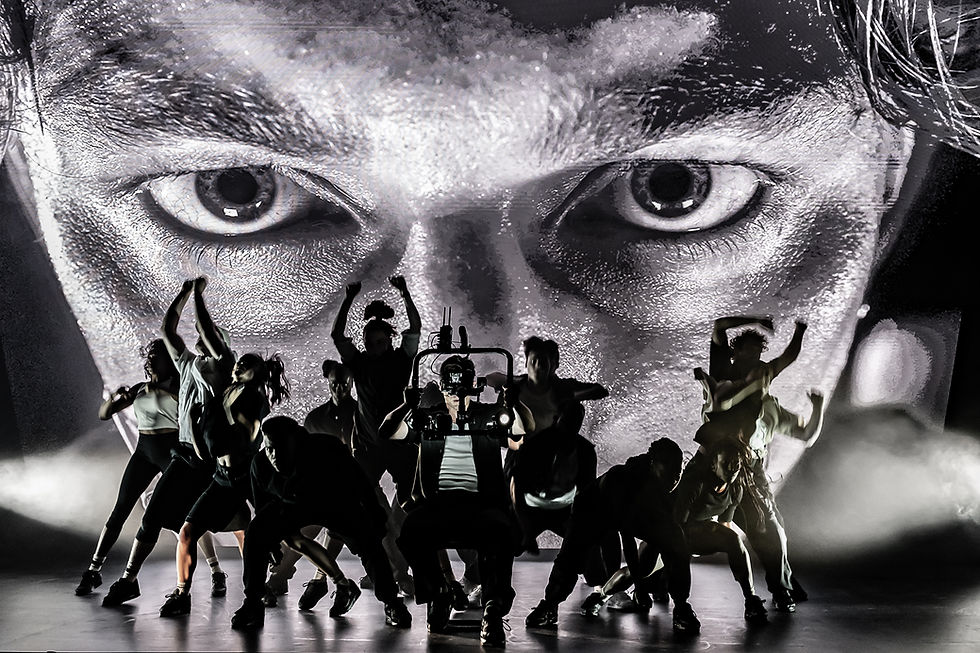Enhance Your Stage Productions with Theatrical Projections
- Jeff Davis

- Jun 29
- 4 min read
Updated: Jun 30
Stage productions have always aimed to create an immersive experience for audiences. In today's digital age, stage projection techniques have emerged as a game-changer, allowing theater companies to enhance their storytelling in visually captivating ways. By incorporating projections, theaters can transport their audience to different worlds, evoke emotions, and amplify the overall impact of the performance.
Understanding Stage Projection Techniques
Stage projection techniques involve the use of multimedia elements projected onto a stage's backdrops or set pieces. This technology can create dynamic visuals, enhance the thematic elements of a play, and allow for seamless transitions between scenes. With the right equipment and planning, these projections can be synchronized with the live performance, creating a harmonious blend of acting and visual storytelling.
Benefits of Using Theatrical Projections
The benefits of integrating theatrical projections into stage productions are substantial. For starters, they can reduce the necessity for physical set changes, which can often take valuable time away from the performance. Instead of moving large set pieces on and off stage, a quick projection can transport the audience to a different location almost instantly.
Moreover, theatrical projections can be cost-effective. For smaller productions working with limited budgets, utilizing projected backgrounds or scenery can lower expenses compared to building elaborate sets.

Types of Projections
There are various types of projections that can be used in theater. Here are some common techniques:
Static Projections: These involve displaying a single image or graphic that remains throughout a scene. Static projections can be used for backdrops, enhancing the visual appeal without distracting from live action.
Dynamic Projections: Unlike static images, dynamic projections can change throughout a scene. They are often used to simulate movement or transformation, such as a sunset transitioning to a starry sky. This keeps the audience engaged and can add realistic kinetic energy to the scenery without being distracting.
Interactive Projections: These projections respond to the actors' movements. Using sensors and advanced technology, directors can create an immersive experience where the visuals change based on the performers' actions on stage.
Video Mapping: This technique involves projecting visuals onto three-dimensional surfaces, turning everyday objects into a dynamic part of the performance. It requires precise alignment but can create a powerful visual impact.

Best Practices for Implementing Projections
When considering how to incorporate projections into your production, several best practices can ensure success:
Plan Ahead: Integrate projections early in the production process, ideally in the design phase. This allows for thoughtful choreography that aligns with projected visuals, enhancing the overall experience.
Choose the Right Technology: Select projection equipment that meets your production's needs. Consider factors like brightness, resolution, and the space's size. A projector that is too dim or low in quality can dampen the audience's experience.
Work with Professionals: Collaboration with a projection designer or technician can take your visuals to the next level. Their expertise can help execute your vision, ensuring the projections integrate seamlessly into the performance.
Test, Test, Test: Conduct thorough testing before the show opens. Make adjustments based on how the projections appear during rehearsals. Small tweaks can significantly enhance visibility and impact.
Enhancing Storytelling Through Projections
Projections can significantly enhance storytelling by complementing the script and character arcs in various ways:
Setting the Mood: Different colors and visuals can set the tone for each scene. For example, a dark, moody background might enhance a dramatic confrontation, while light, whimsical visuals could elevate a comedic moment. Playing with the brightness, color saturation, and hue of the same image or video can dramatically change the audience's perception of it.
Character Development: Projections can be used to reflect a character's emotional state, providing the audience with deeper insight. As the character's mood shifts, projections can change, visually representing their internal struggles.
Symbolism: Abstract projections can serve as symbolic representations of themes or ideas present within the story. This adds layers to the narrative and encourages the audience to engage more deeply with the material.

Case Studies: Successful Productions Using Projections
Many productions have successfully utilized projections to enhance their storytelling. Here are some examples:
Dear Evan Hansen: This musical famously used intricate, multi-screen projections to represent the pervasive nature of social media and its impact on the characters' lives. The projections were integral to the storytelling, showing constantly shifting feeds and online interactions.
Here Lies Love: This immersive musical about the rise and fall of Pilipino First Lady Imelda Marcos used videos and projections, stretching from the back of the stage all the way to the mezzanine of the auditorium, to create a unique and engaging nightclub environment.
Harry Potter and the Cursed Child: This play is renowned for its use of projection mapping of the entire stage and auditorium, allowing the production to create incredibly clever theatrical illusions and stunning magical transitions, often eliciting audible gasps from the audience.
Final Thoughts on Stage Projections
Incorporating stage projection techniques into your productions allows for limitless possibilities in visual storytelling. From enhancing emotional moments to creating captivating backdrops, the technology not only enriches the performance but also brings a modern touch to traditional theater.
By carefully selecting the right techniques, planning effectively, and working with skilled professionals, you can elevate your stage productions to new heights. Don’t miss the chance to transform your storytelling—embrace the artistry of projections and watch as your audience is transported to worlds beyond their imagination.

Comments